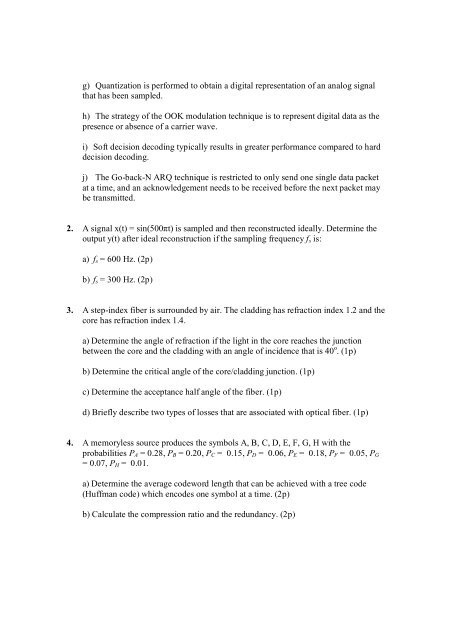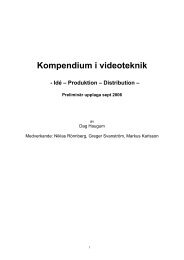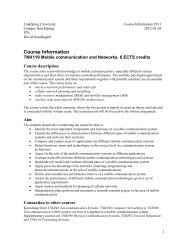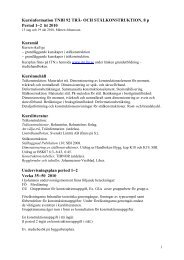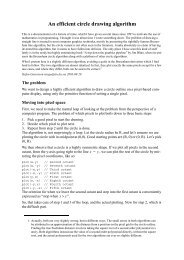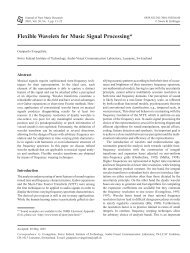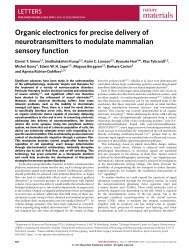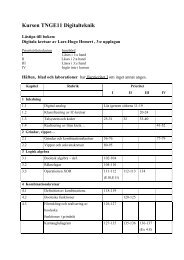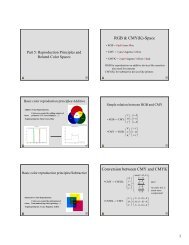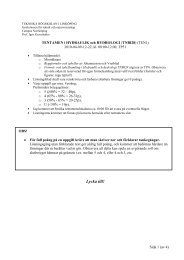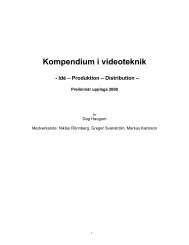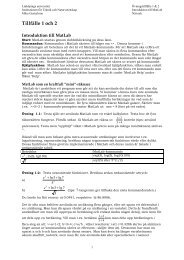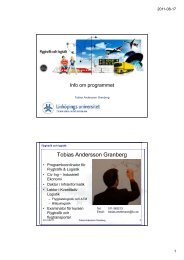Exam in TNE066 Telecommunications – Practice Test
Exam in TNE066 Telecommunications – Practice Test
Exam in TNE066 Telecommunications – Practice Test
Create successful ePaper yourself
Turn your PDF publications into a flip-book with our unique Google optimized e-Paper software.
g) Quantization is performed to obta<strong>in</strong> a digital representation of an analog signal<br />
that has been sampled.<br />
h) The strategy of the OOK modulation technique is to represent digital data as the<br />
presence or absence of a carrier wave.<br />
i) Soft decision decod<strong>in</strong>g typically results <strong>in</strong> greater performance compared to hard<br />
decision decod<strong>in</strong>g.<br />
j) The Go-back-N ARQ technique is restricted to only send one s<strong>in</strong>gle data packet<br />
at a time, and an acknowledgement needs to be received before the next packet may<br />
be transmitted.<br />
2. A signal x(t) = s<strong>in</strong>(500πt) is sampled and then reconstructed ideally. Determ<strong>in</strong>e the<br />
output y(t) after ideal reconstruction if the sampl<strong>in</strong>g frequency f s is:<br />
a) f s = 600 Hz. (2p)<br />
b) f s = 300 Hz. (2p)<br />
3. A step-<strong>in</strong>dex fiber is surrounded by air. The cladd<strong>in</strong>g has refraction <strong>in</strong>dex 1.2 and the<br />
core has refraction <strong>in</strong>dex 1.4.<br />
a) Determ<strong>in</strong>e the angle of refraction if the light <strong>in</strong> the core reaches the junction<br />
between the core and the cladd<strong>in</strong>g with an angle of <strong>in</strong>cidence that is 40 o . (1p)<br />
b) Determ<strong>in</strong>e the critical angle of the core/cladd<strong>in</strong>g junction. (1p)<br />
c) Determ<strong>in</strong>e the acceptance half angle of the fiber. (1p)<br />
d) Briefly describe two types of losses that are associated with optical fiber. (1p)<br />
4. A memoryless source produces the symbols A, B, C, D, E, F, G, H with the<br />
probabilities P A = 0.28, P B = 0.20, P C = 0.15, P D = 0.06, P E = 0.18, P F = 0.05, P G<br />
= 0.07, P H = 0.01.<br />
a) Determ<strong>in</strong>e the average codeword length that can be achieved with a tree code<br />
(Huffman code) which encodes one symbol at a time. (2p)<br />
b) Calculate the compression ratio and the redundancy. (2p)


